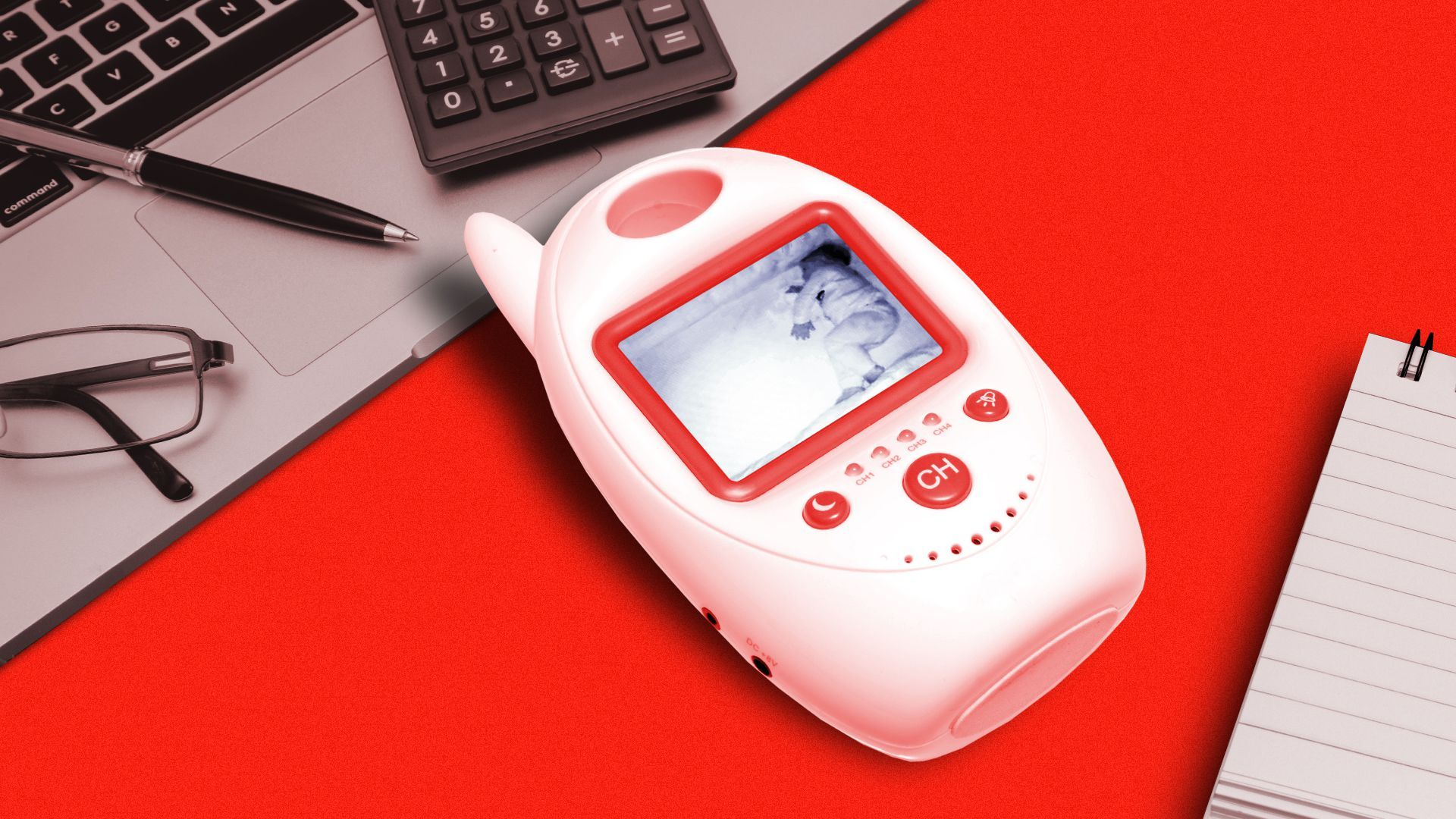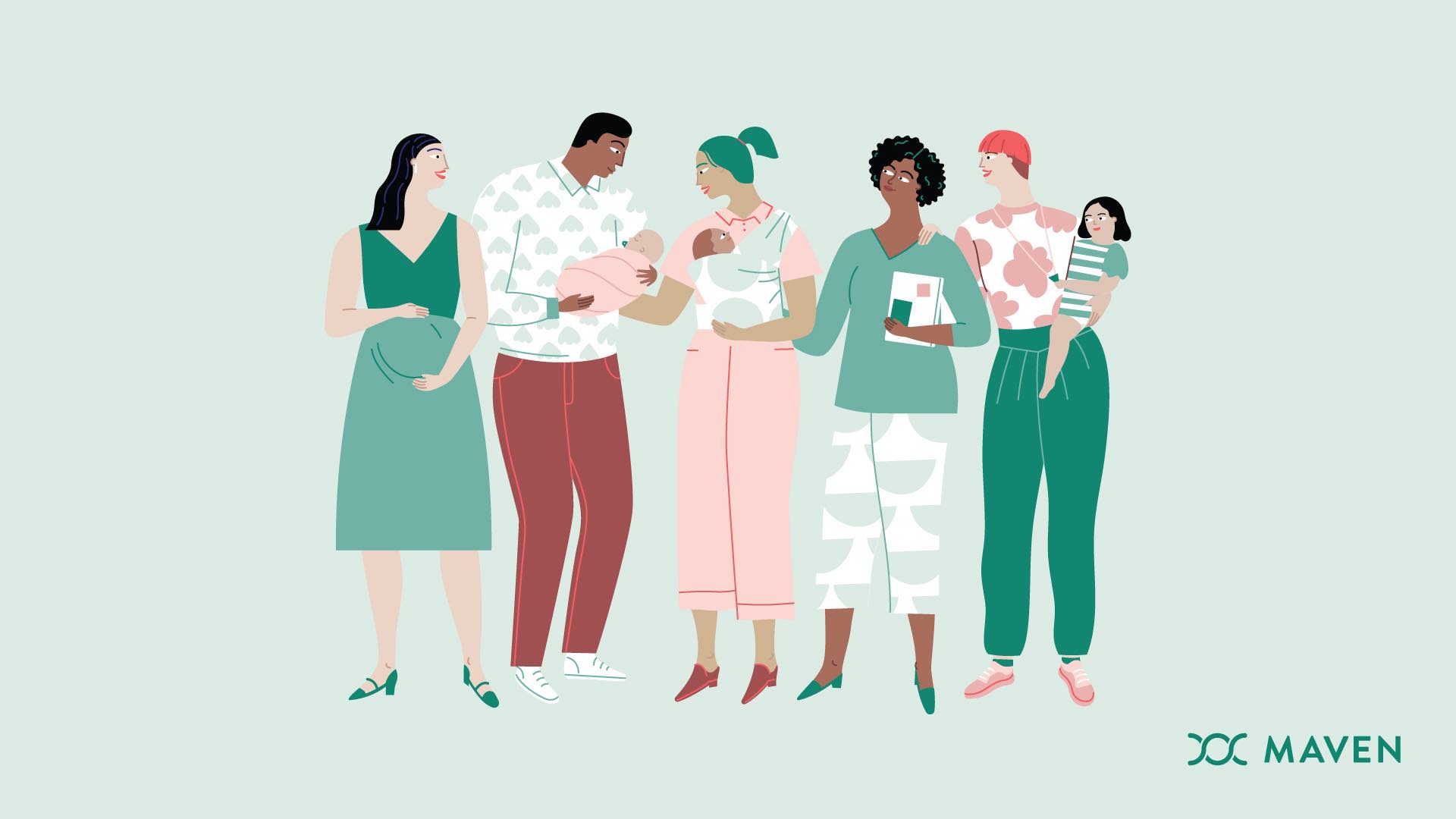| | | | | | | Presented By Maven Clinic | | | | Axios @Work | | By Erica Pandey ·Feb 10, 2021 | | Welcome back to @Work. Send your thoughts on today's issue to erica@axios.com — or reach out on Twitter @erica_pandey. I've got 1,543 words for you today, a 6-minute read. We'll begin with... | | | | | | 1 big thing: A million American mothers are out of work |  | | | Illustration: Annelise Capossela/Axios | | | | Nearly a million American mothers have left the workforce during the pandemic — and many of them might not return. Why it matters: We've dialed the clock back decades in terms of women's workplace progress. The backdrop: Women in the U.S. hit a milestone in February 2020 when, for the first time in history, they held the majority of non-farm payroll jobs, outnumbering men in the workforce. - One year later, women's labor force participation is at a 33-year low.
- Putting mothers — many of whom were in the heights of their careers before the pandemic — back to work is vital to the health of the U.S. economy, experts say.
The big picture: The chasm between women's and men's unemployment numbers is driven by the difference between the pandemic experiences of working mothers and fathers, says Jed Kolko, chief economist at the jobs site Indeed. Take a look at how the prime-age employment to population ratio — or the share of people aged 25–54 who are employed — has changed for different groups of workers. - The share of women aged 25–54 without kids who are employed has dropped 4.8 percentage points over the course of the pandemic. The drop is the same for men of that age without kids.
- But when looking at men and women of prime age with kids, the drops are 3.1 points and 5.7 points, respectively. Working mothers have fared worse than any other group.
"Distance learning and child care have been huge burdens on parents — especially mothers — who have been forced to balance employment and caregiving," Kolko says. There will be long tail effects that hurt working women and mothers long after the pandemic is over. - Single mothers in low-wage jobs that have been forced to quit for child care and don't have a safety net of savings are suddenly dealing with food and housing insecurity.
- On the high end of the wage spectrum, there are lots of cases of women in office jobs who are turning down promotions, University of Michigan economist Betsey Stevenson says.
- "There are a lot of women in that position right now. They're saying, 'Sorry, my kids can't handle this,'" she says. "It's been a rough year and they're just trying to figure out how to make it a less tough year."
And the crisis women face today also has the potential to affect future generations and their decisions to start families or strive for promotions in their careers, says Stevenson. - "What are the girls who are watching this thinking? Will they think kids are too hard? Will they decide not to lean in?"
|     | | | | | | 2. America's priciest office space |  Data: CommercialSearch; Chart: Axios Visuals Of the 50 most expensive places to rent office space, 29 are in California and 13 are in New York — with the Bay Area, Manhattan and Brooklyn dominating the list, Axios Cities expert Jennifer Kingson writes. Why it matters: Despite predictions of pandemic-related shakeups in commercial real estate — and the fact that so many cubicle dwellers are working at home — desirable urban office space remains at a premium. Driving the news: A ranking based on 4Q 2020 numbers from CommercialEdge, a property data and listings service, was topped by Menlo Park, California (home to Facebook's headquarters), and the so-called "Plaza District" of midtown Manhattan. - Only five states — California, New York, Massachusetts, Texas and Florida — plus the District of Columbia were represented on the list.
Details: The most expensive place that was not in New York or California — at #15 — was Cambridge, Massachusetts. - Downtown Boston came in at #31.
- The "NoMa" area of Washington, D.C., (north of Massachusetts Avenue) was #35.
- East Austin was #40.
- #50 was Miami's Brickell district.
The data — which includes only spaces of 25,000 square feet or more — represents the "asking rents" for offices. What's next: Moody's Analytics predicts that effective office rents in Silicon Valley and New York will plummet in 2021, despite only dropping 0.7% in 2020. - The vacancy rate will rise to 19.4% in 2021 — surpassing the previous high of 17.6% from 2010 — and hold steady in 2022, per Moody's.
- "The average effective office rent is projected to decline by 7.5% in 2021 before steadying in 2022," Moody's said.
- "We do not expect average effective office rents to reach their pre-pandemic levels until 2026."
And here's a sign of the times: Salesforce announced today that it'll let most of its employees work from home full time. - That has big implications for San Francisco, reports the San Francisco Chronicle. Salesforce is San Francisco's largest private employer and occupies the city's tallest building, dubbed the Salesforce Tower.
- The company also has big chunks of office space in New York, Chicago and Indianapolis.
|     | | | | | | 3. A crisis for nonprofits |  | | | Illustration: Aïda Amer/Axios | | | | Nonprofit charitable organizations represent America's third-biggest private employers — and they've been walloped by the pandemic. The big picture: Nonprofits have shuttered and shed over a million jobs at a time when people and communities need their services the most, according to a National Council of Nonprofits analysis of Bureau of Labor Statistics data. "When you lose a nonprofit job, you're not only losing that job, but the community is losing a service," says Tim Delaney, president and CEO of the National Council of Nonprofits. "It's a double whammy." - Even though nonprofits were included in the Paycheck Protection Program, those funds have not been enough to save the smaller organizations that focus on small towns or communities, Delaney says.
- And much of the charitable giving amid the pandemic has flowed to the biggest nonprofits.
- The category that has suffered most is nonprofits that support the arts.
What's next: It could take nonprofits nearly 18 months after the containment of the virus to get back to pre-pandemic employment levels, according to a Johns Hopkins study. |     | | | | | | A message from Maven Clinic | | 440,000 parents are speaking up. Is your company listening? | | |  | | | | Working parents are at a breaking point, and the best employers are doing something about it. Learn how 1,200 of the top companies are stepping up to reduce burnout, retain talent, and grow revenue by 5.5x when it matters most. Get the report now. | | | | | | 4. Vaccine fears permeate workplaces |  | | | Illustration: Annelise Capossela/Axios | | | | A quarter of American workers are either unsure about getting vaccinated against the coronavirus or are planning not to get the shots, according to a new survey from The Conference Board. Why it matters: Worker vaccinations are key to safely reopening businesses — from offices to restaurants and shops — around the country. The big picture: 45% of companies have not communicated a vaccination policy to their employees, per The Conference Board's report. - "These findings reinforce the need for companies to limit as much uncertainty as possible by communicating what they know and what their expectations are about returning to the workplace, as well as guidelines about the vaccine to employees," notes Rebecca Ray, who leads human capital research at The Conference Board.
The other side: In many states, vaccines aren't even available to the essential workers who want to get them. |     | | | | | | 5. Worthy of your time |  | | | Illustration: Aïda Amer/Axios | | | | The high cost of missed school (Axios) - The U.S. economy could take a $14 trillion–$28 trillion blow in the long run due to coronavirus-induced learning loss, according to economists' projections. And the longer the pandemic keeps kids out of classrooms, the higher that number will climb.
The $15 minimum wage trade-off (NPR) - Increasing the federal minimum wage from $7.25 an hour to $15 an hour would pull nearly a million Americans out of poverty and increase the wages of more than 17 million people. But it would also cost around 1.4 million jobs, according to a new analysis from the Congressional Budget Office. House Democrats have put the $15 minimum wage in the latest coronavirus relief bill.
The future of working from home (Financial Times) - Jonathan Dingel and Brent Neiman, two University of Chicago economists who made headlines last year for research that showed that less than 40% of U.S. jobs can be done remotely, reflect on a year of teleworking. One big takeaway: We still haven't figured out how to re-create the magic of in-person connection and collaboration in a remote setting.
Remote learning isn't just for kids (New York Times) - Adults around the country are signing up for online trainings and courses to learn new skills and even switch careers as the pandemic roils the job market. But unequal broadband access puts these courses out of reach for those who may need them the most.
|     | | | | | | 6. 1 fun thing: Dispatches from besties |  | | | One group of work friends did a COVID-friendly, coordinated Halloween costume in 2020. Photo: Courtesy of Clint Buechler. | | | | Last week, I wrote about the importance of work besties and asked you all to tell me about your work besties. - My inbox has been flooded with funny and heartwarming stories about bestie pairs around America. And I'd like to share as many as I can fit!
"My 2 work besties and I all have a passionate love for Schitt's Creek. So much, we started having a Friday Zoom meeting appropriately named Schitt's Creek Club where we eat lunch and chat about that week's Schitt's Creek episode. They've now turned into conversations about what we plan to binge on Netflix that weekend. Oh, and they were important to planning our group Halloween costume." See above. — Clint Buechler, growth marketing manager at Formstack in Fishers, Indiana "We are both teachers at a school in LA. I teach Math and Finance while Jessie teaches Jewish Studies. Normally there is very little overlap in these subjects and hence we wouldn't naturally be drawn together to collaborate. She's one to go over the top celebrating birthdays and other holidays, while I am much more down key over those types of events. Not to mention that our political views don't exactly align as well.. That being said, when she joined our staff a few years ago (I had already been employed here), we hit it off immediately. ... I'm not sure how much my productivity has increased since Jessie joined our staff, but I can certainly say that my mental satisfaction is certainly higher than it probably would have been without her here." — Marc Rudajev, teacher at the Milken Community School in Los Angeles, California "When I started my first job, workplace policies, Outlook, and Boston itself were totally foreign to me. I was lucky enough to find guidance, comfort, and — most importantly — friendship in a group of five 20-somethings who started at the company within a year of my start date. Before COVID, we'd lunch, do yoga, indulge in office gossip, and do competitive intelligence recon together (this is what we'd call getting food from our competitors)." — Emmy Fedor, financial analyst Dunkin Brands in Canton, Massachusetts |     | | | | | | A message from Maven Clinic | | Is your company a top workplace for parents? | | |  | | | | The best companies are pulling back the curtain on how they're supporting parents - and the results will shock you. Get access to insider secrets like the one benefit 86% offer along with the surprising tactic that makes employees 20x more likely to stay. | | | | Thanks for reading! | | | | Axios thanks our partners for supporting our newsletters.
Sponsorship has no influence on editorial content. Axios, 3100 Clarendon Blvd, Suite 1300, Arlington VA 22201 | | | You received this email because you signed up for newsletters from Axios.
Change your preferences or unsubscribe here. | | | Was this email forwarded to you?
Sign up now to get Axios in your inbox. | | | | Follow Axios on social media:    | | | | | |










No comments:
Post a Comment